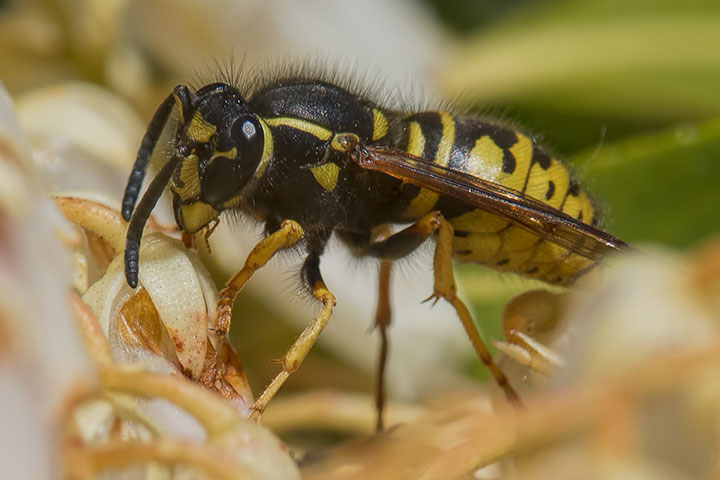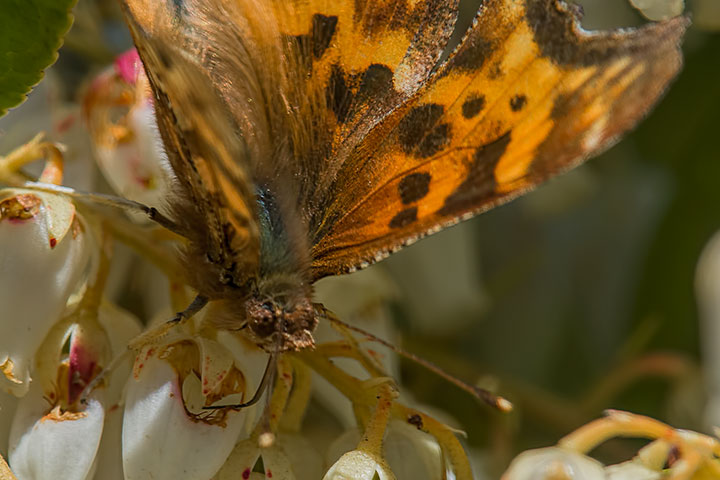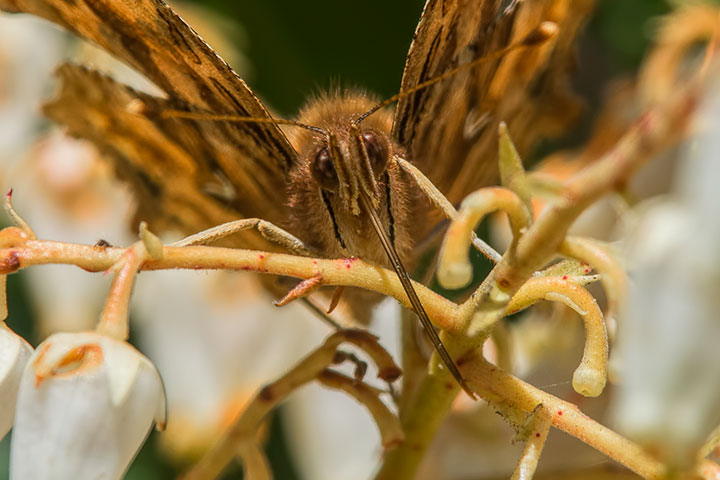Flowers produce nectar for one reason: to entice insects to brush against their reproductive organs and, in doing so, to transfer pollen from one flower to the next. To accomplish this, flowers are structured such that the insect must pass the anthers and stigma to reach the nectary (where the nectar is produced). That is the contract: insects pay for the nectar by providing pollination (see Nectar robbers).
This system works for the benefit of both flowers and insects. It works, that is, until the coming of larcenists. These break-and-enter specialists bypass pollination and just steal the nectar. The only local nectar robbers I have spotted are wasps, but it seems that butterflies are happy to loot.
A (Forest?) Yellow Jacket has a shorter tongue than a bee or fly and so cannot reach the nectar through the flower’s opening, so just chews its way in. By not upholding its side of the contract, it is robbing the flower.

Along comes a looter. A Comma butterfly searching for nectar discovers that the easiest access to nectar is provided by the opening chewed by the wasp.

As this unfolded, my favourite view was of the Comma extending its proboscis as it searches for access to nectar.


Amazingly beautiful photos of these wondrous robbers and looters.
You must have incredible patience, Alistair!